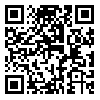دوره 10، شماره 2 - ( 3-1404 )
جلد 10 شماره 2 صفحات 133-125 |
برگشت به فهرست نسخه ها
Ethics code: IR.SBMU.DRC.REC.1399.12.7
Clinical trials code: IRCT20090506001882N10
Download citation:
BibTeX | RIS | EndNote | Medlars | ProCite | Reference Manager | RefWorks
Send citation to:



BibTeX | RIS | EndNote | Medlars | ProCite | Reference Manager | RefWorks
Send citation to:
Eghbali Zarch A, Amiri Tehranizadeh N, Ansari G, Fallahinejad Ghajari M. Sedative Effect of Intravenous Propofol-Ketamine and Midazolam Ketamine Combinations for Dental Treatment of Uncooperative 2-6 Year-Old Children: A Clinical Trial. J Res Dent Maxillofac Sci 2025; 10 (2) :125-133
URL: http://jrdms.dentaliau.ac.ir/article-1-636-fa.html
URL: http://jrdms.dentaliau.ac.ir/article-1-636-fa.html
Sedative Effect of Intravenous Propofol-Ketamine and Midazolam Ketamine Combinations for Dental Treatment of Uncooperative 2-6 Year-Old Children: A Clinical Trial. . 1404; 10 (2) :125-133
چکیده: (1319 مشاهده)
Background and Aim: Various medications are used for intravenous (IV) sedation in pediatric dentistry. This study evaluated the efficacy of IV midazolam/ketamine (MK) versus propofol/ketamine (PK) for dental sedation of uncooperative children.
Materials and Methods: This double-blind, randomized controlled clinical trial was carried out on 22 healthy, uncooperative children aged 2-6 years requiring two similar dental treatment sessions. Children were randomly assigned to two groups. Group A received PK in their first, and MK in their second visit. Group B received the same combinations in a reverse order. Oxygen saturation rate (SPO2) and heart rate (HR) were recorded at baseline, at the time of IV administration, local anesthetic injection, 15 and 30 minutes later, and at the time of discharge. Two independent calibrated pedodontists scored the sedation level using the Houpt scale during treatment. Data were analyzed by t-test, Wilcoxon, Mann-Whitney, and one-sample Kolmogorov-Smirnov tests.
Results: The mean age of the participants was 3.6 years with a mean weight of 15.68 kg. SPO2 was not significantly different between the two groups (P=0.609). However, the HR was significantly higher in the MK combination (P=0.001). No significant difference was detected between the two combinations for sleepiness (P=0.283), movement (P=0.180), crying (P=0.093), or overall behavior (P=0.364). The recovery time in the PK group was significantly shorter than that in the MK group (P=0.03).
Conclusion: Both sedation regimens are effective for dental treatment of uncooperative children. PK combination provided a more acceptable hemodynamic stability and shorter recovery.
Materials and Methods: This double-blind, randomized controlled clinical trial was carried out on 22 healthy, uncooperative children aged 2-6 years requiring two similar dental treatment sessions. Children were randomly assigned to two groups. Group A received PK in their first, and MK in their second visit. Group B received the same combinations in a reverse order. Oxygen saturation rate (SPO2) and heart rate (HR) were recorded at baseline, at the time of IV administration, local anesthetic injection, 15 and 30 minutes later, and at the time of discharge. Two independent calibrated pedodontists scored the sedation level using the Houpt scale during treatment. Data were analyzed by t-test, Wilcoxon, Mann-Whitney, and one-sample Kolmogorov-Smirnov tests.
Results: The mean age of the participants was 3.6 years with a mean weight of 15.68 kg. SPO2 was not significantly different between the two groups (P=0.609). However, the HR was significantly higher in the MK combination (P=0.001). No significant difference was detected between the two combinations for sleepiness (P=0.283), movement (P=0.180), crying (P=0.093), or overall behavior (P=0.364). The recovery time in the PK group was significantly shorter than that in the MK group (P=0.03).
Conclusion: Both sedation regimens are effective for dental treatment of uncooperative children. PK combination provided a more acceptable hemodynamic stability and shorter recovery.
موضوع مقاله:
pediatric
| بازنشر اطلاعات | |
 |
این مقاله تحت شرایط Creative Commons Attribution-NonCommercial 4.0 International License قابل بازنشر است. |



